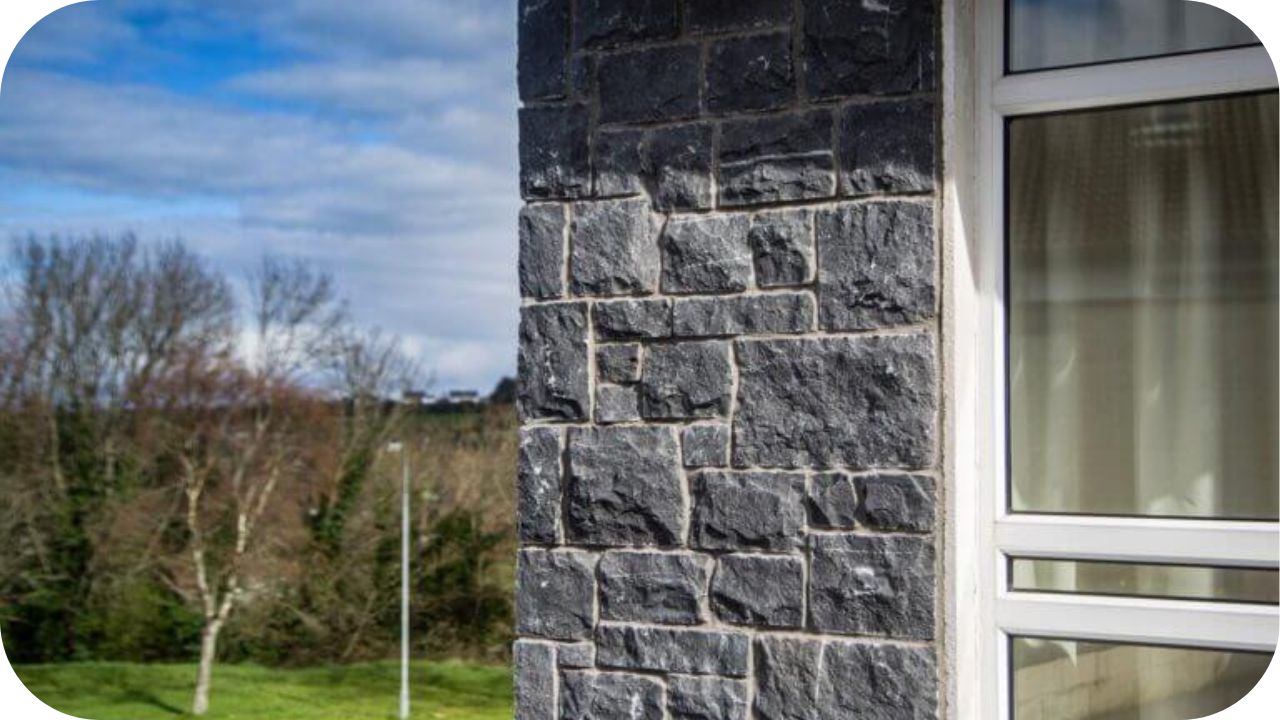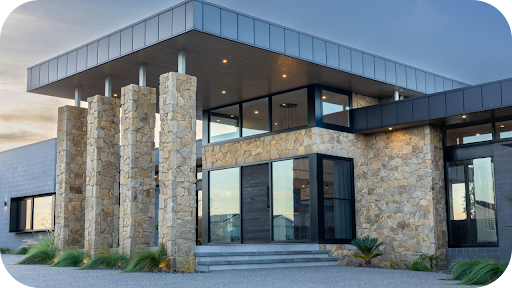
Insulation isn’t just about keeping the cold out; it’s about building smarter, more comfortable spaces that perform all year round.
With rising energy demands and a growing shift toward natural materials, many are turning to stone for more than just looks. Jasper Limestone, known for its strength and striking texture, is now being considered for its thermal qualities.
But can a material celebrated for its durability also contribute to energy efficiency? Let’s look at whether Jasper Limestone is just a façade or a functional asset in modern design.
Is Jasper Limestone a Good Thermal Insulator?
Yes, Jasper Limestone is a good thermal insulator due to its high thermal mass. It helps stabilise indoor temperatures, especially when used in exterior or interior walls. Its performance improves with proper thickness, lighter colour tones, and quality installation.
The Role of Insulation: Thermal Mass vs Thermal Resistance
In stone materials like Jasper limestone, insulation performance is defined by two key concepts: thermal mass and thermal resistance.
Thermal mass refers to the stone’s ability to absorb, store, and gradually release heat, which helps to regulate indoor temperatures by reducing extremes throughout the day. This makes it particularly useful in regions with large fluctuations between daytime and night-time temperatures.
Thermal resistance, commonly measured as R-value, indicates how well a material blocks the transfer of heat. While most conventional insulators rely on high resistance, natural stones like limestone primarily contribute through their thermal mass.
Jasper limestone, due to its dense structure and moderate porosity, works effectively as a thermal buffer. It absorbs heat during the day and releases it slowly when temperatures drop, offering a natural solution for energy efficiency in environmentally conscious architectural designs.
Thermal Properties of Limestone
Limestone’s performance goes beyond its aesthetic value. Below are the key thermal traits that make it a reliable choice in building materials where energy control and comfort truly matter.
1. Heat Retention Ability
Limestone captures heat during the day and slowly releases it as temperatures drop. This natural heat regulation makes it a great option for maintaining comfort in both indoor and outdoor environments.
2. Moderate Thermal Conductivity
Limestone transfers heat at a balanced rate, avoiding rapid temperature shifts. This steady conductivity supports thermal comfort across changing climates and helps prevent overheating or cold spots in built environments.
3. Natural Thermal Mass
Due to its high density, limestone acts as a natural thermal mass. It stores absorbed heat energy and releases it gradually, helping to reduce temperature fluctuations within architectural and outdoor settings.
4. Porosity and Breathability
Limestone’s porous nature allows air and moisture exchange. This breathability supports thermal comfort by reducing condensation build-up and stabilising indoor humidity, particularly in climates with seasonal or daily temperature swings.
5. Insulation Support Role
Limestone enhances insulation systems by regulating surrounding temperatures. While not a primary insulator, its mass and breathability contribute to maintaining steady conditions, especially in external cladding and paving applications.
Best Applications for Jasper Limestone as an Insulator
Not every stone suits every role. Below are the settings where Jasper Limestone’s natural thermal mass and breathability make it an effective and visually appealing insulation choice.
- Exterior Façade Cladding: Jasper Limestone provides a thermal buffer against external temperature shifts, helping maintain indoor comfort while offering a clean, elegant exterior appearance suitable for modern or heritage builds.
- Courtyard Boundary Walls: These walls benefit from Jasper Limestone’s ability to absorb heat during the day and release it slowly, stabilising temperature in semi-enclosed outdoor living areas.
- Garden Retaining Walls: Jasper Limestone adds visual appeal and helps reduce heat fluctuation in adjacent garden beds or seating areas, making it ideal for landscaped zones with thermal performance in mind.
- Outdoor Entertainment Walls: Perfect for alfresco kitchens or feature walls, Jasper Limestone supports ambient temperature control while reinforcing the aesthetic charm of outdoor gathering spaces.
- Thermal Wall Systems in Passive Homes: Jasper Limestone contributes to insulation in masonry-based wall systems, reducing reliance on mechanical heating and cooling in energy-efficient residential architecture.
Benefits of Using Jasper Limestone in Building Envelopes
When used as part of the external envelope, Jasper Limestone provides more than just visual appeal. Below are the core advantages that make it a smart, functional choice for modern construction.
1. Improves Overall Energy Efficiency
Jasper Limestone helps stabilise indoor temperatures by slowing heat exchange, reducing reliance on artificial heating or cooling. This leads to noticeable energy savings and a smaller carbon footprint in both residential and commercial projects.
2. Enhances Acoustic Performance
Its dense structure and mineral composition offer natural sound-dampening benefits. When integrated into walls, Jasper Limestone helps minimise noise transfer between exterior and interior spaces, creating a more comfortable indoor environment.
3. Provides Weather Protection
Jasper Limestone stands up well against wind, rain, and UV exposure. Its durability helps shield the internal structure from weather damage, extending the lifespan of the building’s outer layer with minimal maintenance.
4. Supports Passive Solar Design
The thermal mass of Jasper Limestone stores heat during the day and releases it at night. This quality supports passive heating strategies, reducing mechanical energy consumption in temperature-controlled environments.
5. Boosts Aesthetic and Property Value
With its unique colours and textures, Jasper Limestone elevates curb appeal while delivering long-term functional value. This blend of form and performance can significantly increase property desirability and resale potential.
How to Enhance Jasper Limestone’s Insulation Performance
Jasper Limestone works well on its own. With the right enhancements, it performs even better. Below are key techniques used to maximise its natural insulating potential.
1. Add a Backing Insulation Layer
Pairing Jasper Limestone with rigid foam or mineral wool increases thermal resistance. This helps slow heat transfer through walls, making the structure more energy efficient without compromising the stone’s aesthetic appeal.
2. Use Thicker Slabs Where Possible
Thicker limestone absorbs and stores more heat, increasing its thermal mass. This allows walls to moderate indoor temperatures better by slowly releasing heat during cooler periods of the day.
3. Combine with Thermal Break Systems
Integrating thermal breaks between interior and exterior wall layers helps prevent unwanted heat flow. This limits thermal bridging and enhances overall energy performance when used alongside natural stone cladding.
4. Seal Gaps and Joints Properly
Air leaks significantly reduce insulation efficiency. Ensuring Jasper Limestone panels are tightly sealed at edges and joins prevents drafts and improves thermal consistency across the building envelope.
5. Install with Cavity Wall Construction
Using Jasper Limestone as part of a ventilated cavity wall system allows better moisture control and added insulation space. This setup enhances thermal performance while supporting long-term structural health.
When Not to Rely Solely on Limestone for Insulation
Even a strong natural stone like Jasper Limestone has its limits. Below are scenarios where additional insulation may be necessary to achieve optimal thermal performance.
- In extremely cold climates: Jasper Limestone lacks the high thermal resistance needed in frigid regions. Pairing it with dedicated insulation materials ensures indoor warmth is maintained during long winters.
- In lightweight wall constructions: When used with timber or steel frames, limestone’s thermal mass may not be enough on its own. Supplementary insulation can help balance heat retention and minimise energy loss.
- In passive house designs: Ultra-efficient homes require strict thermal control. While Jasper Limestone offers some thermal benefits, it doesn’t meet all airtightness and resistance standards without added insulation layers.
- For soundproofing between internal walls: Jasper Limestone provides some noise reduction, but for full acoustic separation between internal rooms, purpose-made sound insulation is still necessary.
- Where insulation codes require high R-values: Some building codes specify minimum R-values for walls. Jasper Limestone alone may not comply, so additional layers or materials might be needed to meet regulations.
Conclusion
Jasper Limestone offers more than just aesthetic charm. It contributes meaningful thermal benefits when thoughtfully applied. While not a standalone insulator, it remains a smart, energy-aware choice for stylish walling.
Ready to elevate your next project? Reach out to Splendour in Stone for premium Jasper Limestone selections and expert guidance tailored to your insulation and design needs.
More To Explore

Grey Granite Cobblestones for Driveways: Strength and Style
Grey granite cobblestones combine strength, safety, and timeless appeal, making them a popular choice for Melbourne driveways and outdoor spaces. Their natural flamed texture offers

Granite Wall Cladding Melbourne: Modern and Classic Appeal
Granite wall cladding brings both modern sophistication and classic charm to Melbourne architecture. Known for its durability and natural beauty, granite transforms façades, feature walls,


